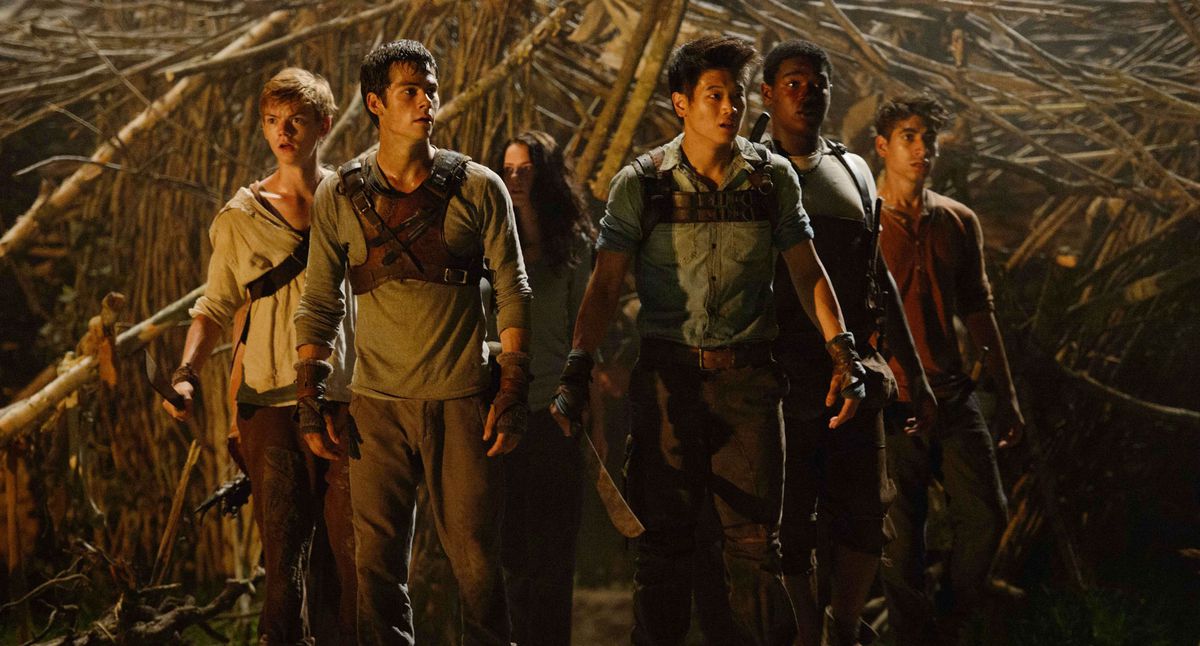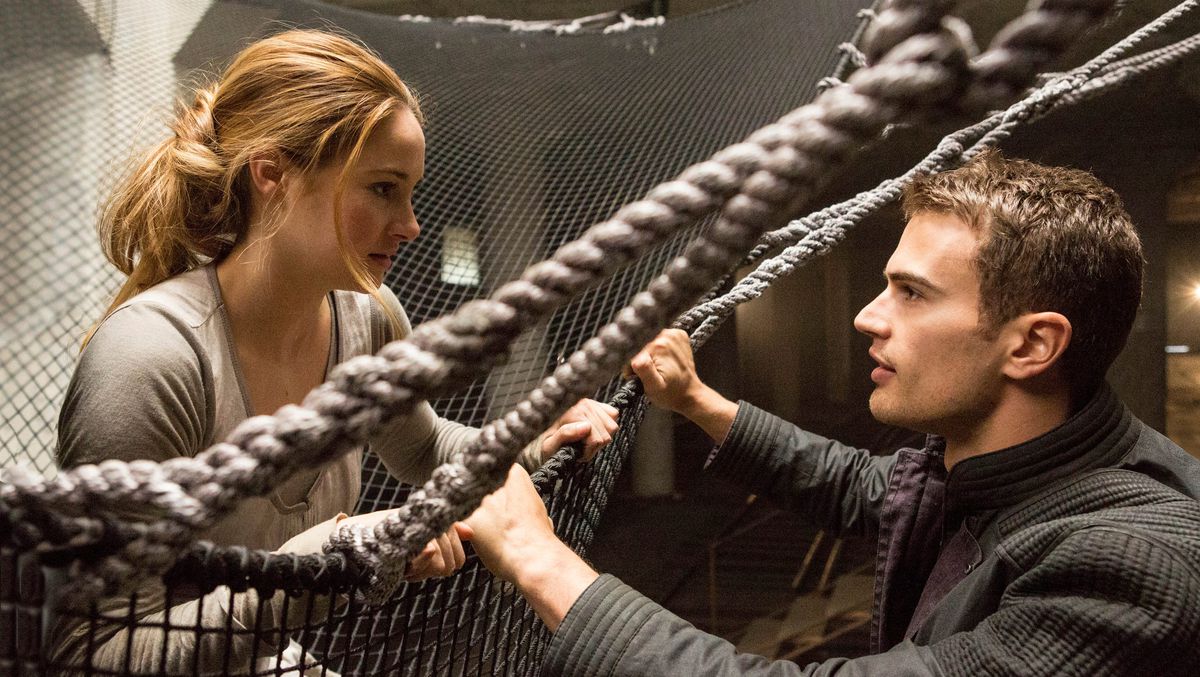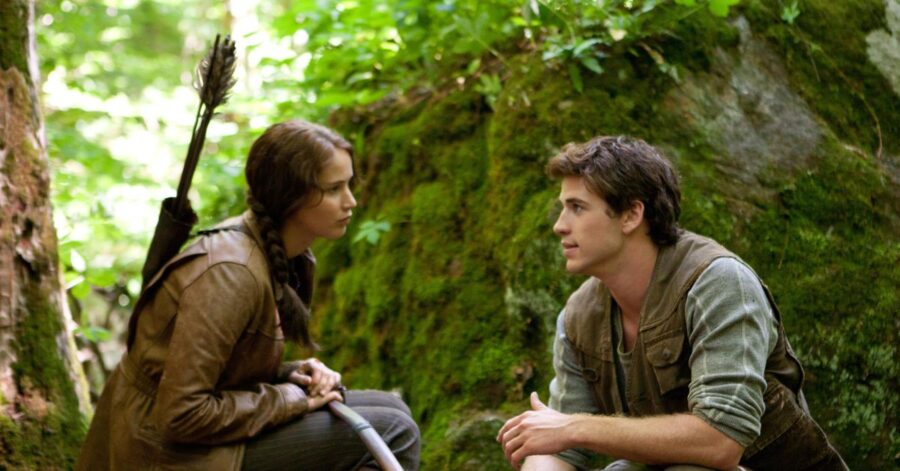The 2010s saw the rapid rise and equally rapid fall of the YA dystopian genre, with The Hunger Games and its followers dominating headlines and popular culture. It’s been argued that the dystopia boom was inspired by cynicism and anxiety in the wake of the 9/11 attacks, but for those of us who became teenagers in the YA dystopia-obsession era, the films in particular served a different function: They cultivated a distrust for the government, expressing and amplifying how millennials around the world were tired of tyrannical leaders. The Hunger Games in particular helped popularize what had already become a thriving literary subgenre, with books from Lois Lowry’s 1993 novel The Giver to Scott Westerfeld’s Uglies series shaping the dystopian boom. And then the wave of Hunger Games copycats oversaturated the market and killed the fad — or so the popular story goes. But there were other reasons the YA dystopia boom ended, and they were built into its premises and execution all along.
The intensity of the fad certainly contributed to its end. In 2014 alone, four would-be blockbuster YA dystopian films hit theaters: The Hunger Games Mockingjay — Part 1, The Maze Runner, Divergent, and The Giver. But saturation isn’t enough to kill a genre, as the last decade’s rolling wave of new superhero films proves. The YA dystopian genre died because it didn’t evolve. Book after book and film after film laid out the same tropes, with the same types of characters all suffering the same generic oppression and experiencing the same teen love triangles. The Hunger Games struck a chord because of its lurid themes and the way it intensified its era’s anxieties about capitalism, imperialism, wealth and power inequality, and technology, but its followers largely added more gimmicks and different kinds of violence, and called it a day.

Photo: Lionsgate
The Hunger Games emerged from similar adults-vs.-youth stories like Battle Royale, but added new layers about media propaganda and the authoritarian structure. Author Suzanne Collins was inspired by Greek mythology, reality-TV programming, and child soldiers, and she used those ideas to give her books more texture. Her protagonist, Katniss Everdeen, is relatable and down to earth: She doesn’t want to become a revolutionary or a hero, she just wants to keep her little sister Primrose safe. Her deteriorating mental health feels realistic, and it was mostly unprecedented in a genre full of bold teen heroes who came through the most horrifying adventures completely unscathed.
Following the Hunger Games series, subsequent YA dystopia films weren’t as richly realized, and the creators didn’t seem to care about the traumatic experiences their young protagonists went through. It’s unrealistic to have a film about teenagers overthrowing tyrants but little to no focus on their emotions. Katniss wasn’t endlessly stoic — Collins allows her to be vulnerable, and to learn that feelings are a sign of strength rather than a weakness. Many of the smash-the-state dystopia stories that followed avoided that kind of focus on feelings — or just followed the Katniss pattern of anxiety and anguish, without finding new territory to explore.
The Hunger Games series focuses on ending a brutal regime that executes children for sport, which requires a revolution and a complete restructuring of society. But the stories always stopped right after the latest oppressive regime fell, as if that would solve all of society’s problems. While actual teenagers were struggling with their own idealism and a wish for a better world, fiction was telling them that systematic oppression is simple and easily solved with a standard good-vs.-evil fight, and that nothing that comes after that fight is interesting or relevant. The stories of how these dystopic societies were rebuilt would be more novel and enticing, but there was never room in YA dystopias for that kind of thought or consideration.
Which left nowhere for these stories to go after the injustices were overturned and the fascist villains were defeated. They all built momentum and excitement around action, but few of these stories ever considered what young-adult readers want to know: After one cruel leader is gone, what comes next? Injustice rarely ends with the death or departure of one unjust ruler, but YA dystopian stories rarely consider the next world order, and how it could operate differently, without stigmatizing its people. Revolution, post-apocalyptic survival, and restructuring society are fascinating topics, but apart from the Hunger Games’ brief coda about Katniss’ future PTSD, most YA dystopia stories just don’t explore these areas.

Photo: Twentieth Century Fox
And just as YA dystopian stories weren’t particularly interested in the future, they also were rarely that interested in their pasts, or even their present. They almost never explored their societies in any depth, beyond declaring them to be evil, violent, and controlling. We don’t really know much about the destructive regimes in the Maze Runner or Divergent series — we just know they’re bad. The run of dystopian movies in particular only offered the quickest, shallowest explanation of why a government would force its children into mazes, or make them kill each other. The Capitol’s desire to terrorize its citizens in The Hunger Games, or The Maze Runner’s focus on population control and disaster response — these are political excuses for mass murder, but not nuanced ones.
And at the same time, YA dystopian stories were always too dependent on the hero model, where a single teenager sparks a revolt and does the bulk of the work in taking down a totalitarian state. Although that’s an empowering vision, it feels like a dated, hollow model to the young adults engaging in actual collective action. We’re arguably living in dystopian times, amid a changing world where authoritarianism and fascism are on the rise, both in America and around the world. And resistance to it has to be cooperative, not dependent on Chosen One heroes. Inequality and oppression are driven by institutions, not single villains who could easily be brought down. The simplicity of stories where one brave young person stops a monster and revolutionizes a society quickly started to feel like simplistic fantasy.
And part of the way these dystopian fantasies avoided reality was by avoiding the real and relatable issues that teenagers face. Katniss, Divergent’s Tris, and Maze Runner’s Thomas are all teenagers, but their stories’ primary concession to their ages are the minor love triangles they face. Their stories explore issues around technology, environmental destruction, and government control, but without, for instance, explicitly drawing parallels between the innovative ways teenagers use technology, or interact with the education systems designed to shape them. Teenagers experience a plethora of emotions as we grow up, but these dystopian films rarely felt authentic about teen angst or anxieties — their heroes felt just like generic adult heroes, played by younger actors.
And of course, non-white people barely exist in the dystopia-film wave. The few BIPOC characters are never fully developed, and the audience never gets to learn about their stories. Studies highlight that white characters are far better represented in YA literature than other groups, which may help explain the way some fans were weirdly bothered by Black characters in the Hunger Games movies — in such a white-leaning genre, they not only didn’t expect anything else, they couldn’t handle it when it arrived.

Photo: Lionsgate
These dystopias suggest that they take place in some sort of post-racial utopia, but they get there by suggesting non-white people wouldn’t exist in a dystopian society. Despite Jennifer Lawrence and Shailene Woodley dominating the genre with messages of female empowerment, they still live in fantasy worlds that amplify some real-world issues, like government overreach and profound inequality, but that barely address the other real issues facing women and teen girls, like gender discrimination and harassment. Pretending none of these things would exist in dystopian society, when we know from real experience that oppressive regimes actually significantly compound the issue, feels shallow and false.
But who knows, as the march against new fascist regimes continues, the genre may revive in a new form. Trends come and go, but they tend to be cyclical — and the second or third time around, they’re more likely to have evolved. As the diversity wave spreads through different cinematic and literary genres, from fantasy to romance to sci-fi and beyond, the YA dystopia genre could revive in new forms. With the rise of more BIPOC creatives in the industry, maybe we’ll get a distinctive YA dystopian film with more characters of color.
Not everybody wants to live in or imagine a dystopian society. The dystopian fad may have faded in part because young readers and viewers are ready for some positivity, and for less fantastical, simplified problems and solutions. But it may also be that they’re doing the work themselves now. Young people are mounting more and more sophisticated political campaigns against the real-world dystopic futures they’re facing, from the climate crisis and the revival of authoritarian governments to nation-specific problems like sectarian violence, wars, white nationalism, and terrorist attacks. Eventually, it might be possible for authors to take inspiration from that reality, and revive the genre in more convincing and compelling forms.
Polygon – All
Source link
Related Post:
- The Apple Vs. Epic Lawsuit Has Sparked ‘Xbox Game Pass On Switch’ Rumours Again
- Battlefield 2042’s short film gives us a glimpse into a climate change dystopia • Eurogamer.net
- SpongeBob: Krusty Cook-Off has partnered with The Eleanor Crook Foundation and LifePack for World Hunger Day | Articles
- Dread Hunger’s murder mechanic is slow, brutal, and great for gameplay
- Dread Hunger, an Among Us-style game, leaves Early Access this fall
- Epic Games Store finally allowing devs to self-publish games
- Why it could succeed. Why it can fail. And what may actually happen
- Games Within Games – The Best Video Games In Other Video Games
- Olympic Games Tokyo 2024: The Official Video Game Finally Releasing Outside of Japan Next Month
- Twelve Minutes finally has a release date, and it’s coming to Game Pass
